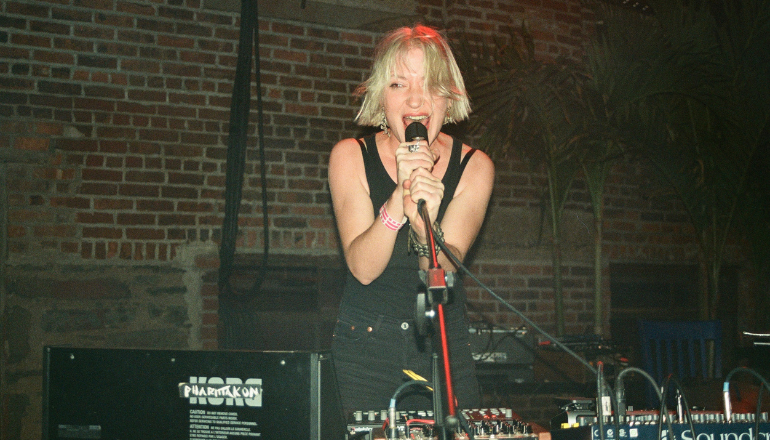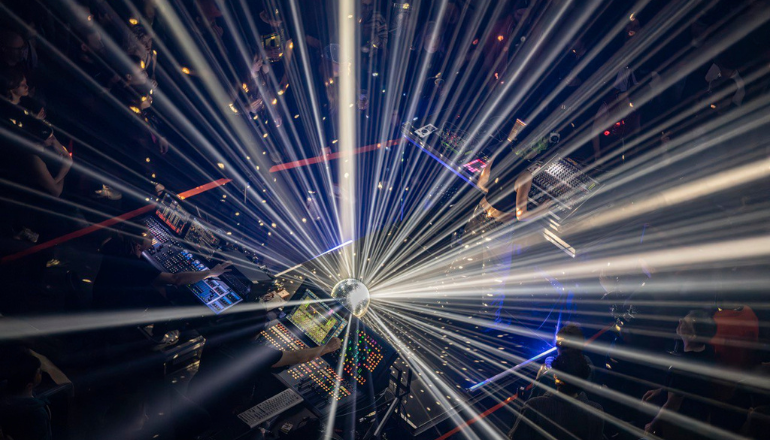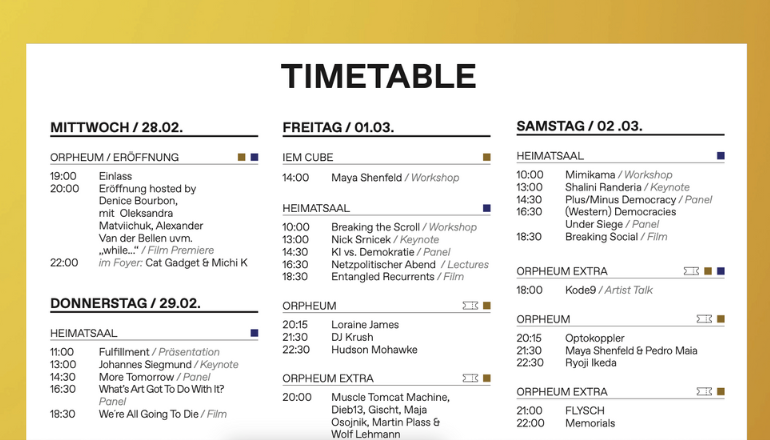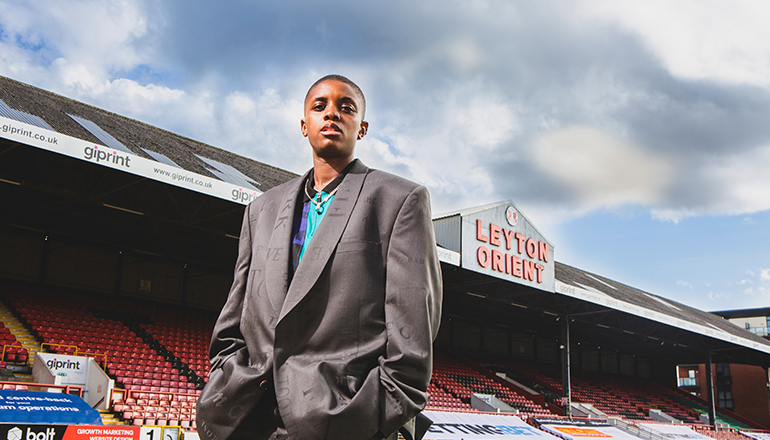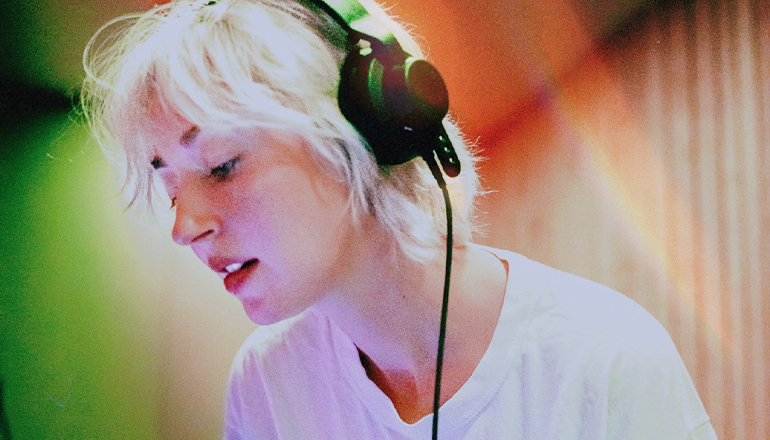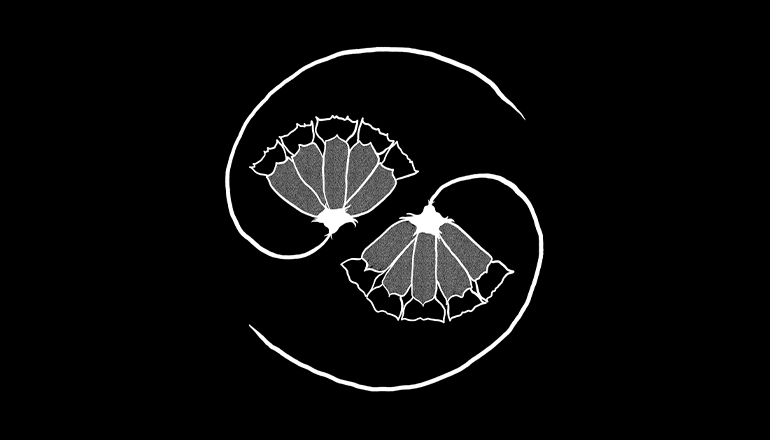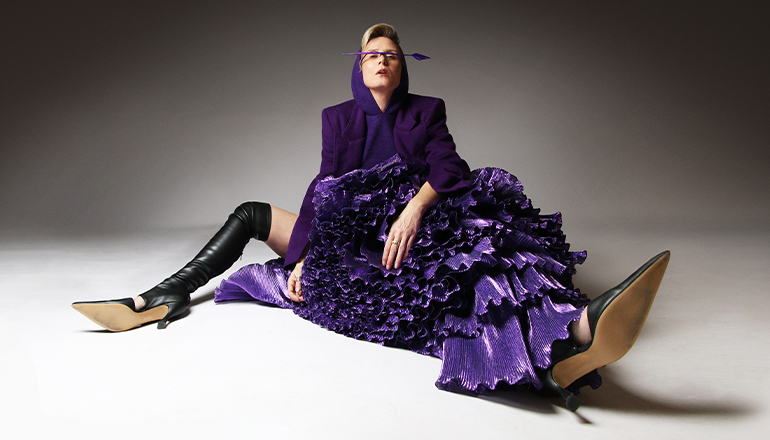An interview with Pharmakon
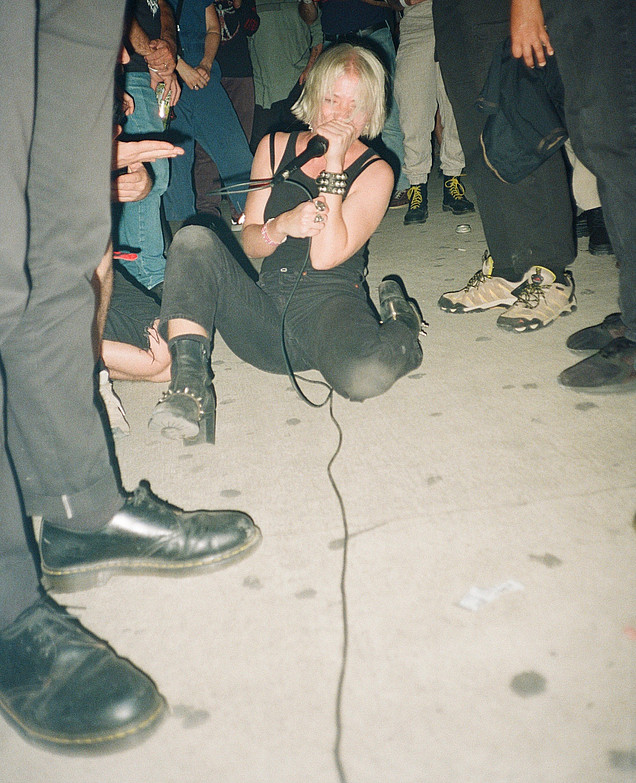
There is live video footage of you, banging on a metal sheet and I could feel the energy overwhelming me, even though it’s just some video on my laptop screen. There is some force hidden in your sounds that can translate even virtually, even though the physical affection through sound in a real live setting is something completely different for sure. Do you have an explanation why certain sounds, especially distorted sounds of metal have these qualities? It might be something archaic, something to do with instinct as well. It’s not only the volume. It has something to do with the frequencies and with force I guess?
With the sheet metal instrument, there is a visual act that reinforces what you hear. It’s not just the sound of distorted metal which you’re having an emotional response to, but the visceral nature of how it’s made - a body crashing into metal, cause and effect. Physical percussion is so rudimentary to human music, but in this case it’s creating a sound of inhuman machinery, of circuits being overwhelmed into distortion. One way to think of Industrial music is as Post-Industrial Revolution music. A way to consider the place of humans in the span of existence and our isolation from the natural world. Reworking cold, inert, soulless objects and discarded materials of manufacturing back into something with meaning and substance in our image. And we may not like what we hear. But it rings true.
"I believe sound and voice can pin us to the moment and activate our awareness of our existence"
It really makes sense that you’re referring to Antonin Artaud in your work. His theory of the cruel theatre and his ideas about what it can do to the actor/actress and the audience — catharsis, cleansing, bringing body and mind back to when they were united, in the primordial sphere. But also his theory about „the scream“, this primordial scream that reaches down into the abyss of being, That’s something one can totally apply to your sound aesthetics. How your voice transmits, the sounds communicates - It has a direct impact. What fascinates you with his theory?
Reaching down into the primordial sphere is like recalling an inherited memory of when we were part of the rest of the living world, before we prized objects over everything else. The primordial scream is beyond word or even thought - a communication of the complexity of the human condition in the simplest form that cannot be mistaken or confused by the trappings of language and culture. The way that scent can evoke emotions and memories, I believe sound and voice can pin us to the moment and activate our awareness of our existence, the connection of body and mind, our instincts and the truths we hide from.
To work on a highly conceptual level, to establish a theory around music and performance has tradition in industrial music and power electronics. To look at the dark side, to activate the hidden, suppressed affects, to break through this state of repression and repressive structures. Industrial acts also did that in re-enacting certain power dynamics on stage. Acts like Whitehouse or Throbbing Gristle would shout at their audience, and torture with harsh, painful sounds, and frequencies that made you feel miserable. Do you remember the first time you went to such a show? Who played and which impact did it have on you?
My first noise show was Bloodyminded, Macronympha, Charlie Draheim and Air Conditioning in 2007. I was especially taken with Bloodyminded. Every member of the band was clad in leather from head to toe, armed with a handheld mono synth and a microphone- Mark with 5 or 6 microphones all tangled together. They screamed and fell all over each other, tripped over mic cords, writhed around all sweaty and electric. It felt familiar in some ways to the punk shows I was used to attending, but it was formless, aching, throbbing, raw and it hit me like a ton of bricks. The electronics were effective but very minimal - it was lyric-driven, and the audience knew the words and would shout along. I could make out lyrics about the AIDS ward in the hospital. I had lost someone I cared about— a family friend and babysitter who I adored — to AIDS a few years prior. It felt like sharing grief, cathartic. It was ugly and true. I knew immediately that I needed to make something like that.
"Even though I perform, I don’t think of what I do as entertainment"
Your performance is without doubt confrontational. You enter the crowd, address people directly, shout in their face. Why does it seem like a necessity to you to break with the invisible 4th wall, and tear down barriers? It has something of a wake-up call to me.
I have trouble staying on stage because it reinforces the 4th wall that is necessary for entertainment. Even though I perform, I don’t think of what I do as entertainment. It’s not about amusement and distraction. I want to channel energy, sending it back and forth, touching that deep nerve of pre-word thought, creating a space and bringing people into it with me. Every person in the room is implicated.
You were part of the DIY noise scene that started to flourish in the beginning of the 2000s. Has the communal spirit of these days changed? Do you consider yourself still a part of the DIY scene? Do you feel as part of a community in New York still? I guess not a digital one, which is so common nowadays.
The effects of greedy real estate developers and an overzealous police department has greatly impacted the ability to run illegal DIY venues here (which is where all the best gigs happen). And the influence of social media has certainly changed the landscape in various ways since the early oughts’. But yes, there is still a very tangible DIY noise community here, and people dedicated to supporting and feeding it. There are so many overlapping layers of friend groups, sub-genres, and generations of noise scenes operating in NYC. Some of these people I’ve known for 16 years, whether we lived and ran a show house together, collaborated live, put out a split tape, toured with each other, shared unfinished demos for critique… some of them are my age, others are older, founding members of seminal projects, active members of earlier scenes and communities, people who inspired us, included us, or shared their resources and knowledge. Some are younger with their own microcosm going on, who bring new influences and perspective to things. This city is hard to survive in… so people, interest, and eras come and go in waves- but a few of us crusty barnacles keep hanging on in perpetuity. Each era brings a few more Heads who stick around, so it just morphs and evolves over time.
